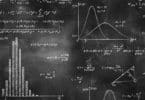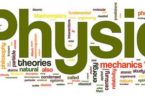Optics Question Bank:
Ques. Two vertical plane mirrors are inclined at an angle of 60o towards each other. A ray of light traveling horizontally is reflected first from one mirror and then from the other. The resultant deviation is
(a) 60
(b) 120
(c) 180
(d) 240
Ques. A plane mirror reflects a pencil of light to form a real image. Then the pencil of light incident on the mirror is
(a) Parallel
(b) Convergent
(c) Divergent
(d) None of these
Ques. For the sustained interference of light, the necessary condition is that the two sources should
(a) have constant phase difference
(b) be narrow
(c) be close to each other
(d) of the same amplitude
Ques. How will the image formed by a convex lens be affected if the central part of the lens is covered by black paper?
(a) Remaining part of the lens will form no image
(b) The central position of the image is absent
(c) There will be no effect
(d) The full image will be formed with lessened brightness
Ques. If the ratio of amplitude of two waves is 4 : 3, then the ratio of maximum and minimum intensity is
(a) 16 : 18
(b) 18 : 16
(c) 49 : 1
(d) 94 : 1
Related: Fluid Mechanics questions
Ques. Which of the following is conserved when light waves interfere?
(a) Intensity
(b) Energy
(c) Amplitude
(d) Momentum
Ques. Intensity of light depends upon
(a) Velocity
(b) Wavelength
(c) Amplitude
(d) Frequency
Ques. Ray diverging from a point source from a wave front that is
(a) Cylindrical
(b) Spherical
(c) Plane
(d) Cubical
Ques. The ratio of amplitude of interfering waves is 3 : 4. Now the ratio of their intensities will be
(a) 16/9
(b) 49 : 1
(c) 9/16
(d) None of these
Related: Endocrine system questions
Ques. Two coherent sources have intensity in the ratio of 100/1. The ratio of (intensity) max/(intensity) min is
(a) 1/100
(b) 1/10
(c) 10/1
(d) 3/2
Ques. Newton postulated his corpuscular theory on the basis of
(a) Newton’s rings
(b) Colors of thin films
(c) Rectilinear propagation of light
(d) Dispersion of white light
Ques. The dual nature of light is exhibited by
(a) Photoelectric effect
(b) Refraction and interference
(c) Diffraction and reflection
(d) Diffraction and photoelectric effect
Ques. Coherent sources are those sources which
(a) Phase difference remains constant
(b) Frequency remains constant
(c) Both phase difference and frequency remain constant
(d) None of these
Related: Electrostatics practice problems
Ques. The wave nature of light is verified by
(a) Interference
(b) Photoelectric effect
(c) Reflection
(d) Refraction
Ques. If two light waves having the same frequency have an intensity ratio of 4 : 1 and they interfere, the ratio of maximum to minimum intensity in the pattern will be
(a) 9 : 1
(b) 3 : 1
(c) 25 : 9
(d) 16 : 25
Ques. Which of the following statements indicates that light waves are transverse?
(a) Light waves can travel in vacuum
(b) Light waves show interference
(c) Light waves can be polarized
(d) Light waves can be diffracted
Ques. Soap bubbles appear colored due to the phenomenon of
(a) Interference
(b) Diffraction
(c) Dispersion
(d) Reflection
Ques. Two sources of waves are called coherent if
(a) Both have the same amplitude of vibrations
(b) Both produce waves of the same wavelength
(c) Both produce waves of the same wavelength having constant phase difference
(d) Both produce waves having the same velocity
Ques. On a rainy day, a small oil film on water shows brilliant colors. This is due to
(a) Dispersion of light
(b) Interference of light
(c) Absorption of light
(d) Scattering of light
Ques. If L is the coherence length and c the velocity of light, the coherent time is
(a) cL
(b) L/c
(c) c/L
(d) 1/Lc
Ques. If the amplitude ratio of two sources producing interference is 3 : 5, the ratio of intensities at maxima and minima is
(a) 25 : 16
(b) 5 : 3
(c) 16 : 1
(d) 25 : 9
Ques. The wave nature of light follows because
(a) Light rays travel in a straight line
(b) Light exhibits the phenomena of reflection and refraction
(c) Light exhibits the phenomenon of interference
(d) Light causes the phenomenon of the photoelectric effect
Ques. If the ratio of intensities of two waves is 1 : 25, then the ratio of their amplitudes will be
(a) 1 : 25
(b) 5 : 1
(c) 26 : 24
(d) 1 : 5
Ques. The ratio of intensities of two waves is 9 : 1. They are producing interference. The ratio of maximum and minimum intensities will be
(a) 10 : 8
(b) 9 : 1
(c) 4 : 1
(d) 2 : 1
Ques. A wave can transmit …… from one place to another
(a) Energy
(b) Amplitude
(c) Wavelength
(d) Matter
Related: Radiology physics questions
Ques. The similarity between the sound waves and light waves is
(a) Both are electromagnetic waves.
(b) Both are longitudinal waves
(c) Both have the same speed in a medium
(d) They can produce interference
Ques. By a monochromatic wave, we mean
(a) A single ray
(b) A single ray of a single color
(c) Wave having a single wavelength
(d) Many rays of a single color
Ques. The idea of secondary wavelets for the propagation of a wave was first given by
(a) Newton
(b) Huygen
(c) Maxwell
(d) Fresnel
Ques. Light appears to travel in straight lines since
(a) It is not absorbed by the atmosphere
(b) It is reflected by the atmosphere
(c) Its wavelength is very small
(d) Its velocity is very large
Related: Matrices and Determinants problems
Ques. Two coherent monochromatic light beams of intensities I and 4I are superposed. The maximum and minimum possible intensities in the resulting beam are
(a) 5I and I
(b) 5I and 3I
(c) 9I and I
(d) 9I and 3I
Ques. The phenomenon of interference is shown by
(a) Longitudinal mechanical waves only
(b) Transverse mechanical waves only
(c) Electromagnetic waves only
(d) All these types of waves
Ques. Through Huygen’s wave theory of light, we cannot explain the phenomenon of
(a) Interference
(b) Diffraction
(c) Photoelectric effect
(d) Polarization
Ques. Two coherent sources of light can be obtained by
(a) Two different lamps
(b) Two different lamps but of the same power
(c) Two different lamps of the same power and having the same color
(d) None of these
Ques. The idea of the quantum nature of light has emerged in an attempt to explain
(a) Interference
(b) Diffraction
(c) Radiation spectrum of a black body
(d) Polarization
Related: chemistry Equilibrium practice problems
Ques. Huygen’s conception of secondary waves
(a) Allow us to find the focal length of a thick lens
(b) Is a geometrical method to find a wavefront
(c) Is used to determine the velocity of light
(d) Is used to explain polarization
Ques. According to the corpuscular theory of light, the different colors of light are due to
(a) Different electromagnetic waves
(b) Different forces of attraction among the corpuscles
(c) Different size of the corpuscles
(d) None of these
Ques. Through the corpuscular theory of light, the phenomenon which can be explained is
(a) Refraction
(b) Interference
(c) Diffraction
(d) Polarization
Ques. A virtual image larger than the object can be obtained by
(a) Concave mirror
(b) Convex mirror
(c) Plane mirror
(d) Concave lens
Ques. A concave mirror is used to focus the image of a flower on a nearby well 120 cm from the flower. If a lateral magnification of 16 is desired, the distance of the flower from the mirror should be
(a) 8 cm
(b) 12 cm
(c) 80 cm
(d) 120 cm
Related: questions to ask about Enzymes
Ques. While using an electric bulb, the reflection for street lighting should be from
(a) Concave mirror
(b) Convex mirror
(c) Cylindrical mirror
(d) Parabolic mirror
Ques. Which one of the following statements is true?
(a) An object situated at the principal focus of a concave lens will have its image formed at infinity.
(b) Concave mirrors can give a diminished virtual image
(c) Given a pointed source of light, a convex mirror can produce a parallel beam of light.
(d) The virtual image formed in a plane mirror can be photographed
Ques. A person sees his virtual image by holding a mirror very close to his face. When he moves the mirror away from his face, the image becomes inverted. What type of mirror he is using?
(a) Plane mirror
(b) Convex mirror
(c) Concave mirror
(d) None of these
Ques. A boy stands straight in front of a mirror at a distance of 30 cm away from it. He sees his erect image whose height is 1/5 th of his real height. The mirror he is using is
(a) Plane mirror
(b) Convex mirror
(c) Concave mirror
(d) Plano-convex mirror
Ques. Given a point source of light, which of the following can produce a parallel beam of light?
(a) Convex mirror
(b) Concave mirror
(c) Concave lens
(d) Two plane mirrors inclined at an angle of 90
Ques. The image formed by a convex mirror of focal length 30cm is a quarter of the size of the object. The distance of the object from the mirror is
(a) 30cm
(b) 90cm
(c) 120cm
(d) 60cm
Related: Nuclear Chemistry Question Bank
Ques. A convex mirror is used to form the image of an object. Then which of the following statements is wrong
(a) The image lies between the pole and the focus
(b) The image is diminished in size
(c) The image is erect
(d) The image is real
Ques. The image formed by a convex mirror is
(a) Virtual
(b) Real
(c) Enlarged
(d) Inverted
Ques. The field of view is maximum for
(a) Plane mirror
(b) Concave mirror
(c) Convex mirror
(d) Cylindrical mirror
Ques. An object of size 7.5cm is placed in front of a convex mirror with a radius of curvature 25 cm at a distance of 40cm. The size of the image should be
(a) 2.3 cm
(b) 1.78 cm
(c) 1 cm
(d) 0.8 cm
Ques. The focal length of a concave mirror is 50 cm. Where an object is placed so that its image is two times and inverted
(a) 75 cm
(b) 72 cm
(c) 63 cm
(d) 50 cm
Related: Amines worksheet
Ques. An object 5cm tall is placed 1m from a concave spherical mirror which has a radius of curvature of 20cm The size of the image is
(a) 0.11 cm
(b) 0.50 cm
(c) 0.55 cm
(d) 0.60 cm
Ques. Which of the following can not produce a virtual image?
(a) Plane mirror
(b) Convex mirror
(c) Concave mirror
(d) All these can produce a virtual image
Ques. A diminished virtual image can be formed only in
(a) Plane mirror
(b) A concave mirror
(c) A convex mirror
(d) A convex mirror
Ques. Two plane mirrors are at 45 to each other. If an object is placed between them, then the number of images will be
(a) 5
(b) 9
(c) 7
(d) 8
Ques. A man of length h requires a mirror, to see his own complete image of length at least equal to
(a) h/4
(b) h/3
(c) h/2
(d) h
Ques. Two plane mirrors are inclined at an angle of 72o. The number of images of a pointed object placed between them will be
(a) 2
(b) 3
(c) 4
(d) 5
Ques. The light reflected by a plane’s mirror may form a real image.
(a) If the rays incident on the mirror are diverging
(b) If the ray incident on the mirror is converging
(c) If the object is placed very close to the mirror
(d) Under no circumstances
Related: General Organic chemistry Sample Paper
Ques. The ratio of intensities of two waves is given by 4 : 1. The ratio of the amplitudes of the two waves is
(a) 2 : 1
(b) 1 : 2
(c) 4 : 1
(d) 1 : 4
Ques. Interference was observed in an interference chamber when air was present. Now the chamber is evacuated and if the same light is used, a careful observer will see
(a) No interference
(b) Interference with bright bands
(c) Interference with dark bands
(d) Interference in which the width of the fringe will be slightly increased
Ques. Which one of the following phenomena is not explained by Huygen’s construction of a wavefront?
(a) Refraction
(b) Reflection
(c) Diffraction
(d) Origin of spectra
Ques. Wavefront means
(a) All particles in it have the same phase
(b) All particles have opposite phases of vibrations
(c) Few particles are in the same phase, the rest are in the opposite phase
(d) None of these
Ques. Two waves having intensities in the ratio 25 : 4 produce interference. The ratio of the maximum to the minimum intensity is
(a) 5 : 2
(b) 7 : 3
(c) 49 : 9
(d) 9 : 49
Ques. Two light sources are said to be coherent if they are obtained from
(a) Two independent point sources emitting light of the same wavelength
(b) A single point source
(c) A broad resource
(d) Two ordinary bulbs emitting light of different wavelengths
Related: Kingdom Animalia (Biology) Sample Paper
Ques. Evidence for the wave nature of light cannot be obtained from
(a) Reflection
(b) Doppler effect
(c) Interference
(d) Diffraction
Ques. An object is at a distance of 0.5 m in front of a plane mirror. The distance between the object and the image is
(a) 0.5 m
(b) 1 m
(c) 0.25 m
(d) 1.5 m
Ques. A small object is placed 10 cm in front of a plane mirror. If you stand behind an object 30 cm from the mirror and look at its image, the distance focused on your eye will be
(a) 60 cm
(b) 20 cm
(c) 40 cm
(d) 80 cm






